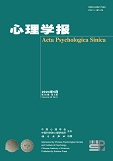Personality judgment, the assessment of others' personalities, is a fundamental social cognitive ability that significantly impacts individuals’ social functioning. Does this ability differ between younger and older adults? While previous research has primarily focused on the accuracy of personality judgment across ages, the present study delved deeper into two distinct components of this accuracy ?? normative accuracy and distinctive accuracy ?? to gain a more comprehensive understanding of age-related variations in personality judgment. We hypothesized that older adults may possess an advantage in normative accuracy due to their richer life experiences and social knowledge related to different groups (H1). However, cognitive declines associated with aging may hinder their ability to gather and utilize individual-specific personality information in specific contexts, resulting in decreased distinctive accuracy. Furthermore, we investigated how the richness of personality-relevant information available within the same time duration moderates the age differences in personality judgment. We predicted that younger adults would be more proficient in utilizing incremental information to improve their distinctive accuracy, while older adults’ cognitive declines would limit their proficiency in doing so, thereby widening the gap in distinctive accuracy between the two age groups (H2). Testing these hypotheses will advance our understanding of age differences in personality judgment.
To achieve these objectives, we adopted a 2 (age group of judge: older and younger) × 3 (richness of information: unitary, medium, and rich) between-subject experimental design. A total of 81 older participants (aged 60~83 years, M ± SD = 66.67 ± 4.44) and 82 younger participants (aged 18~27 years, M ± SD = 21.98 ± 2.12) were recruited to serve as judges. They watched the self-introduction videos of 24 target characters presented in a sequence, including 12 older adults and 12 younger adults. Each self-introduction video had three versions with varying richness of information, which was manipulated by changing the number of information modality: unitary (text/subtitle only), medium (text/subtitle and sound), and rich (text/subtitle, sound, and image). After each video, participants evaluated the Big Five personality traits of the target in the video.
Analysis of variance (ANOVA) and multilevel linear modeling analyses were performed to investigate the effects of age group of the judge and information richness on the overall personality judgment accuracy, normative accuracy, and distinctive accuracy. The results revealed that older adults exhibited higher overall personality judgment accuracy than younger adults, which was mainly due to their superior normative accuracy, supporting H1. Furthermore, the overall personality judgment accuracy improved with increasing information richness. Information richness moderated the age differences in distinctive accuracy, but not normative accuracy. Specifically, older adults performed worse than younger adults when presented with videos containing only text/subtitle (i.e., in the unitary information condition). However, older adults performed similarly well as younger adults when presented with videos containing text/subtitle and sound (i.e., in the medium information condition) or videos containing text/subtitle, sound, and image (i.e., in the rich information condition). Contradicting with H2, the results revealed that older and younger adults’ discrepancy in distinctive accuracy narrowed with increasing information richness.
Overall, the results indicate that age-related declines in basic cognitive abilities did not diminish older adults’ social cognitive ability for personality judgment. Social knowledge and life experiences might play a crucial role in enhancing the personality judgment accuracy of older adults via improving their normative accuracy. Additionally, older adults demonstrated the ability to utilize incremental personality-related information to improve their distinctive accuracy and compensate for their gaps in distinctive accuracy compared to younger adults. These findings highlight the importance of valuing and considering the opinions of older adults in social practices, such as personnel selection, where accurate personality judgment is needed.




